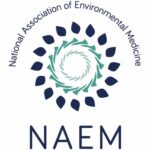What Took Walmart So Long?
 |
|
Dr. Larry Weiss Cleanwell Founder & |
CleanWell is a member of No Secrets, a group of companies that lists all ingredients in their cleaning products – right down to the fragrance.
On September 12, Walmart announced that it would be requiring suppliers to phase out 10 classes of chemicals that they considered hazardous by 2015. Although the announcement didn’t specify exactly which chemicals were on the list, it is widely assumed that it included Triclosan, phthalates, and parabens. Doubtless informed that this was eminent, Johnson & Johnson and Proctor & Gamble announced that they would be eliminating Triclosan from their products ahead of the Walmart announcement.
With that in mind, it is timely to ask the question: Are there other chemicals that we should be aware of that weren’t on the Walmart list? A credible industry source has indicated that Walmart had originally included quaternary ammonia or “quats,” a class of disinfecting chemicals with serious long-term toxicity concerns, but they were deleted at the last minute. In light of this major decision by the world’s largest retailer to take affirmative action in the interest public health, why was this important class of arguably higher risk chemicals left on the shelves? Perhaps it is best to start is with an objective examination of the evidence.
What do we know about the potential health and safety risks associated with long-term use of quats in our homes and workplaces?
Quats were first introduced into commerce for hospitals and janitorial service about 30 to 40 years ago. Within a few years, they became the dominant chemistry and the incidence of occupational asthma and dermatitis increased dramatically. In 1970 the Occupational Safety and Health Administration (OSHA) was created to track work-related injuries and illness, but it didn’t focus on long-term illness such as asthma due to chemical exposure until much later.
Nevertheless, over the past 25 years, numerous independent peer-reviewed studies demonstrated a strong correlation between exposure to quats and occupational asthma, dermatitis, and allergies. In some studies, almost 70% of the workers had clinical signs of asthma. This was confirmed recently in 2012; a massive multi-year French study that found an overall reduction in occupational asthma except for workers exposed to quats where there was a significant increase.
In the early 90’s, quats became the dominant disinfecting ingredient in most consumer cleaning sprays, aerosols and wipes. Coincident with the introduction of quats into consumer products, there has been an epidemic of childhood asthma, eczema, dermatitis, and allergies. Childhood asthma has almost tripled in the past 25 years so that today, over 10% of children are asthmatic. Recent CDC reports found that eczema and dermatitis track asthma in children and that there has been an explosion in childhood food and environmental allergies.
It is impossible to avoid the conclusion that we are in the midst of an epidemic of immune hypersensitivity disorders.
While it is tempting to connect the evidence from quats and occupational asthma with the emergence of similar patterns of childhood illness, it would be overly simplistic to do so. Asthma and other immune dysfunction syndromes are complex, multi-factorial clinical problems and it is likely that there are a number of causative factors that come together to produce illness. Nevertheless, to ignore 25 years of epidemiological evidence that asthma and other immune dysfunction frequently occur in the setting of long-term exposure to quats would be reckless. It should be taken as a red flag that quats might in some way be causative and we should exercise due caution. This is especially the case when there is widespread exposure from consumer cleaning products and over 10% of children are already sick.
Today, most of the household cleaners and wipes that are sold in the US are “all-in-one” combined cleaner-disinfectants, and almost all of those contain quats. In fact, quats are so ubiquitous that is nearly every household or workplace has been using them for years and often decades. The penetration of quats into our homes and our bodies is deep and persistent. At the same time, most consumers have never heard of quats and are unaware that they are using them to clean their homes. They just think of them as “cleaners.” Very few have ever read the EPA mandated directions or safety warnings on the product label. They would probably be distressed to learn that there has been convincing evidence of the potential for serious long-term health risks to their children and that the companies that manufacture the products have been aware of this evidence for years.
Remember, we buy these products to clean our homes and one reason we clean is out of concern for our health. Why would we knowingly bring potentially toxic chemicals into our homes for our health?
After years of insisting that the ingredients on the list were both “safe and effective,” Walmart’s decision to take action in the interest of public health validated longstanding scientific and consumer concerns. Considering the weight and substance of the scientific evidence upon which those concerns were based, one has to ask: What took so long?
The answer is that manufacturers and retailers have different priorities than you do. They are businesses and are primarily concerned about sales, profits, and their stock price. This should come as no surprise and their actions are consistent with their priorities. You are concerned about your health and the health of your family. We need to make our priorities their priorities.
While it is encouraging that Walmart has finally taken action, it has taken too long. These chemicals have been on the shelves long after the risks were known. It is time that we all make it our business to read the labels, ask questions, and make smart, informed decisions about the chemicals in the products that we bring into our homes. The recent actions taken by Walmart, Johnson & Johnson, and Proctor & Gamble should be taken as evidence that even a minority of informed consumers does have the power to effect change.
When we stop buying products containing dangerous chemicals and start demanding safer products, they will have no choice but to respond and deliver safer products.






Thanks for sharing this important information. Quats are something that aren’t talked about enough, great overview and summary.
Thank you for this article, I am highly sensitive to all the chemicals that are being used now. I have trouble being in public places because of the things that OTHER people use, I did not know the name quats but I do the effects of it. I wish there were more that would recognize how they are poisoning the people around them and the earth and themselves. Blogs like the one you did on this is a start of making people aware.
thank you, LaVerne
Thank you for this great post. There certainly hasn’t been enough attention to this chemical. I hope we can change that!